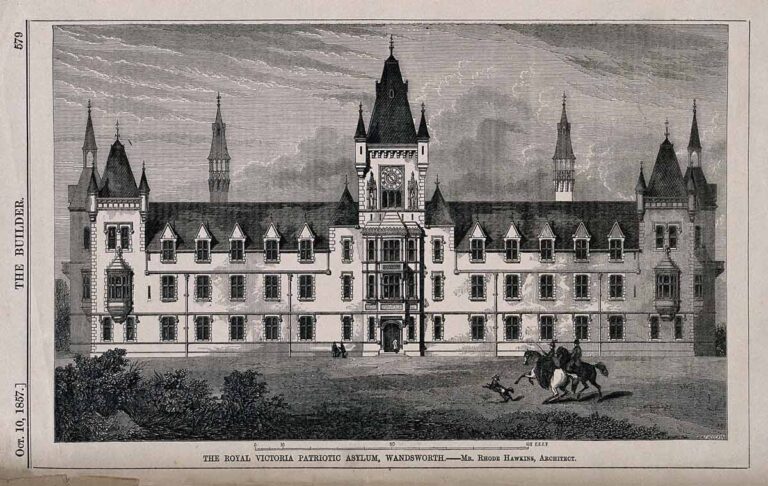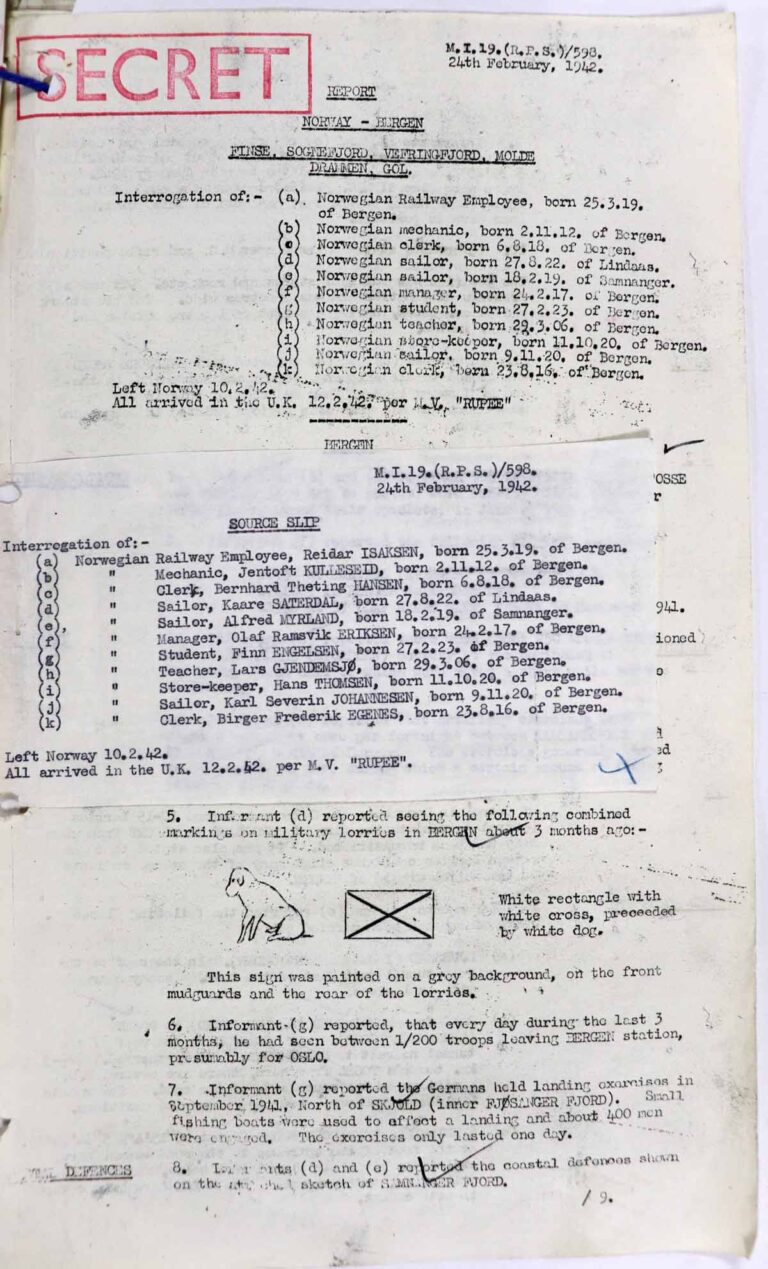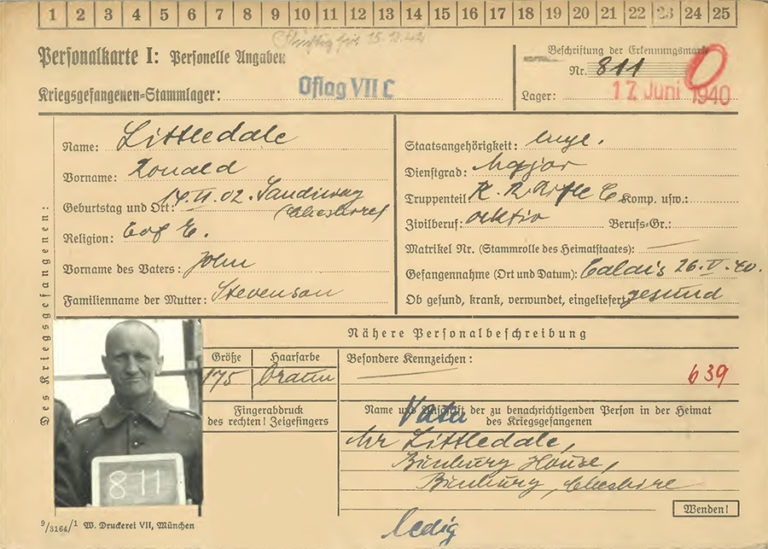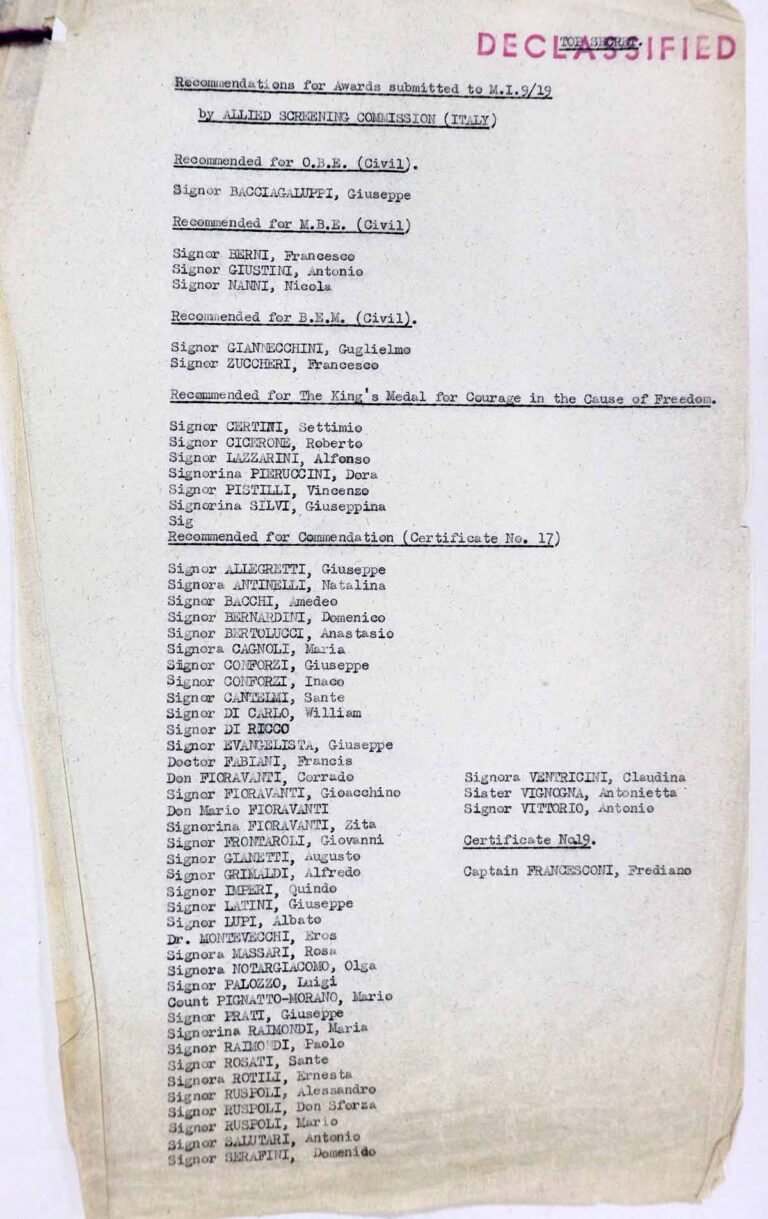International Volunteer Day is the perfect time to celebrate the years of effort from volunteers at The National Archives that inspired our new exhibition, Great Escapes: Remarkable Second World War Captives, opening in February 2024.
Our volunteers spent six years cataloguing (meaning physically looking at and recording information about) over 220,000 prisoner of war cards in the record series WO 416. After completing that, they started work on cataloguing further records about people who escaped or evaded imprisonment or internment after being captured. They uncovered some remarkable stories.
Military operations and intelligence
The record series WO 208 contains a vast number of records relating to the organisation of military intelligence during the Second World War. Our volunteers encountered records of civilians and military personnel.
The first files they catalogued were foreign nationals entering Britain as alien refugees. These records are mainly civilian men interviewed at the Royal Patriotic School, based in South London. These interviews aimed to ensure the refugee was not a spy, and to find intelligence on life and military installations in in German-occupied Europe.

These interviews give details on both military and civilian life and can include maps and plans of towns and districts across Europe. They include people like:
- Leon Devoy, a Belgian air force pilot who evaded capture and found his way to the UK.
- Major William den Boer of the Dutch army, who left Holland on 18 June 1941, arriving in the UK on the 20 June.
- Slawomir Dziarchzykowski, an army officer and secretary to the Polish Legation at Kaunas.
The refugees include Polish military who, when captured, agreed to fight for the Germans, then escaped to Britain. Others had joined the German army then deserted.
The main records are civilians who fled Europe to Britain. They range from students to fishermen, from teens to 70-year-olds. You can read more about these records in our blog on the topic, Royal Patriotic School: Interrogation of civilians arriving in UK from abroad.
They contain interviews with civilians who returned following the commando attack on the German-held Lofoten Islands on 4 March 1941. The files also include interrogation reports of prisoners of war brought back from the attack (WO 208/5163). These extracts of overheard conversations are from various ‘cages’ around the UK, and although they do not generally give names, they do give rank and an insight into their views on various subjects.

There are also files on the awards to helpers of Allied personnel who escaped or evaded capture. Where this was practicable volunteers have indexed these by name. These files include the length of service (or help) and the type of help they gave. You can find out more about them in our blog: Indexing WO 208: Helpers of Allied prisoners of war.
On the big screen
Our volunteers have catalogued the personal interrogations (or interviews) of British and Commonwealth soldiers and officers who escaped, evaded or were liberated from German and Italian prisoner of war camps.
These records include some more famous stories and names. The Great Escape is mentioned in these reports; the escapes or captures around a Bridge Too Far at Arnhem; and the escape attempts that inspired the movie Reach for the Sky. We have also found a couple of photographs of high-security prison Colditz Castle in the files.

North, south or stay
Italy signed an armistice on 8 September 1943, resulting in the ‘opening’ of prisoner of war gates. The files give accounts of what happened to Allied servicemen. There were mixed instructions on what to do, varying between staying in the camp, making your own way somewhere, or taking the help of locals in the region until the Allies arrived.
When the German army arrived and took control of the camps, those who remained were transported back to Germany. Some of them escaped by jumping from trains or escaping when the trains stopped. Those who were transported back to Germany were recorded in the prisoner of war cards (in WO 416, mentioned earlier, and explored in this blog).
Some decided to make their way to Allied lines, thought to be in the south of Italy. These men were helped by Italian civilians, and most were able to re-join the Allied forces. One prisoner of war in Italian hands was Field Marshall Montgomery’s stepson, Richard Carver. Our blog about Leaving the Italian prisoner of war camp Fontanellato includes his story.
The majority of the reports relate to the journey to Switzerland. Some took the train whilst others walked across the mountains. These escapees were aided by locals, and many Italians can be found mentioned both in the records and in the awards to helpers. One of the escape routes was through the Vatican, a neutral territory.

For those in Western Europe, escaping was just as hard. Cataloguing the interrogation reports shows the vast help Allies received, as well as how hard it was to break out and evade recapture.
One British soldier of the Durham Light Infantry, captured at Dunkirk, promptly escaped and made his way to Gibraltar. Back in England he joined the Oxford and Buckinghamshire Light Infantry. Following D-Day, he was captured again by the Germans, only to escape once more and make his way to Switzerland. Those who made their way to Switzerland or Gibraltar were interned prior to their evacuation.
Without our volunteers we could not find these stories of capture, escape and evasion during the Second World War, and of the parts played by all the men and women involved. These efforts deserve to be recognised.
Find out more
Find out more about these records at our upcoming free exhibition Great Escapes: Remarkable Second World War Captives. Opening Friday 2 February 2024, Great Escapes explores the human spirit of hope and resilience during times of captivity, revealing both iconic and under-told stories of prisoners of war and civilian internees during the Second World War.
We’ve also scheduled a season of special events to accompany the exhibition that are available to book now.
Did the member of the Ox. & Bucks. arrive on D-Day because he became a glider pilot? They were recruited from that regiment, probably an outstanding group. First they undertook the regular RAF elementary power flying course. My father taught many of them at RAF Booker in Tiger Moths.
I have sometimes wondered about those interviewed at the Royal Patriotic in Wandsworth and how they must have felt having escaped and come to this country but still facing great uncertainty concerning their futures.
Equally I have come across references to named individuals who helped allied airmen and others in post-war interrogation reports and thought about what thanks or recompense they received for the risks they took.
Looking forward to the exhibition and what should be a very interesting way and informative way to take a break from the files waiting in my locker at the Archives and add to my knowledge.